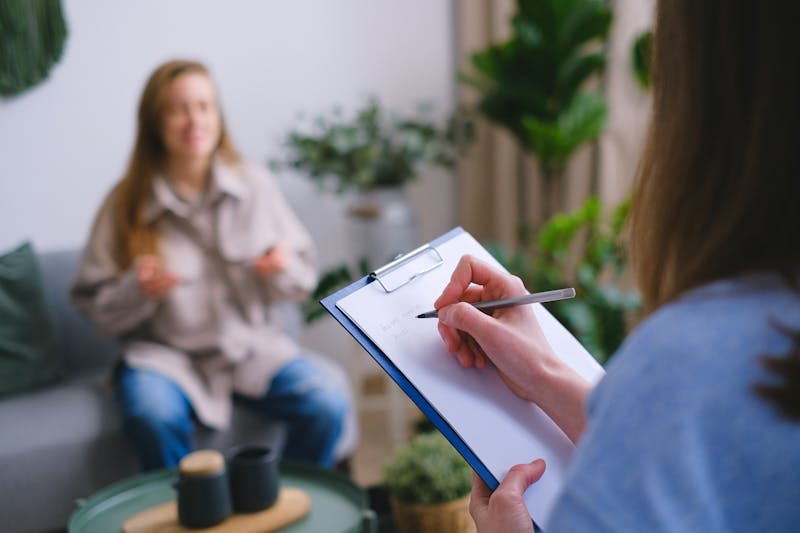
Healing Relationship Trauma: A Path to Healthy Love
Expert guidance on overcoming past relationship trauma and building healthy, fulfilling relationships.
Healing from relationship trauma is a journey that requires patience, understanding, and professional support. This comprehensive guide provides insights and strategies for moving forward and building healthy relationships.
Understanding Relationship Trauma:
- 1. Types of Relationship Trauma
- Common experiences and their impacts:
- - Emotional abuse
- - Physical abuse
- - Infidelity
- - Abandonment
- - Betrayal
- Effects on current relationships:
- • Trust issues
- • Attachment problems
- • Communication barriers
- • Intimacy challenges
- • Self-worth impact
2. Recognizing Trauma Responses Common manifestations: Emotional Symptoms: - Anxiety in relationships - Fear of abandonment - Difficulty trusting - Emotional numbness Behavioral Patterns: - Avoidance - Hypervigilance - People-pleasing - Self-sabotage
3. The Healing Process Steps toward recovery: Self-Awareness: - Identifying triggers - Understanding patterns - Recognizing responses - Accepting emotions Professional Support: - Trauma therapy - EMDR treatment - Group therapy - Support groups
4. Building New Relationship Skills Essential tools for healthy connections: Communication: - Setting boundaries - Expressing needs - Active listening - Conflict resolution Self-Care: - Emotional regulation - Stress management - Personal boundaries - Self-compassion
5. Creating Safety in New Relationships Building trust gradually: Establishing Trust: - Clear communication - Consistent behavior - Respect for boundaries - Gradual intimacy Red Flag Awareness: - Recognizing warning signs - Trusting intuition - Setting limits - Maintaining boundaries
6. Partner Support Guidelines For those supporting trauma survivors: Understanding Role: - Patient presence - Emotional support - Respect boundaries - Learn triggers Communication Tips: - Listen without judgment - Validate feelings - Ask before acting - Maintain consistency
7. Long-term Healing Strategies Sustainable recovery practices: Daily Practices: - Mindfulness exercises - Journaling - Affirmations - Grounding techniques Ongoing Growth: - Regular therapy - Support network - Self-reflection - Skill building
Practical Implementation:
- 1. Daily Recovery Work
- - Morning reflection
- - Emotional check-ins
- - Coping strategies
- - Evening processing
2. Weekly Practices - Therapy sessions - Support group meetings - Self-care activities - Relationship work
3. Monthly Review - Progress assessment - Strategy adjustment - Goal setting - Celebration of growth
Signs of Healing Progress: - Increased trust capacity - Better boundaries - Improved communication - Reduced triggers - Greater self-awareness - Healthier relationships - Enhanced self-worth
Remember: Healing is not linear. Progress includes both steps forward and temporary setbacks. Be patient with yourself and celebrate small victories.
Action Steps:
- 1. Immediate Actions
- - Seek professional help
- - Join support groups
- - Start journaling
- - Practice self-care
2. Short-term Goals - Identify triggers - Learn coping skills - Build support network - Establish boundaries
3. Long-term Objectives - Process trauma - Develop healthy patterns - Build relationship skills - Maintain growth
The journey of healing from relationship trauma is challenging but worthwhile. With proper support and dedication to recovery, it's possible to build healthy, fulfilling relationships while honoring your past experiences and growth.
https://scratchpositions.fun/random-position-generatorhttps://scratchpositions.fun/game/foreplay-dicehttps://scratchpositions.fun/game/intimate-spicy-truth-or-darehttps://scratchpositions.fun/game/erogenous-zone-explorerMore Intimate Insights

Top 10 Tips for Trying New Sex Positions
Discover expert advice on how to make trying new sex positions a fun and comfortable experience for both you and your partner.

How to Use a Random Position Generator for Fun Dates
Spice up your date nights with our random position generator! Learn how to incorporate it for a memorable and exciting experience.

30 Romantic Date Night Ideas for Couples to Reignite the Spark
Discover creative and intimate date night ideas that go beyond the typical dinner and movie. Perfect for couples looking to add excitement to their relationship.